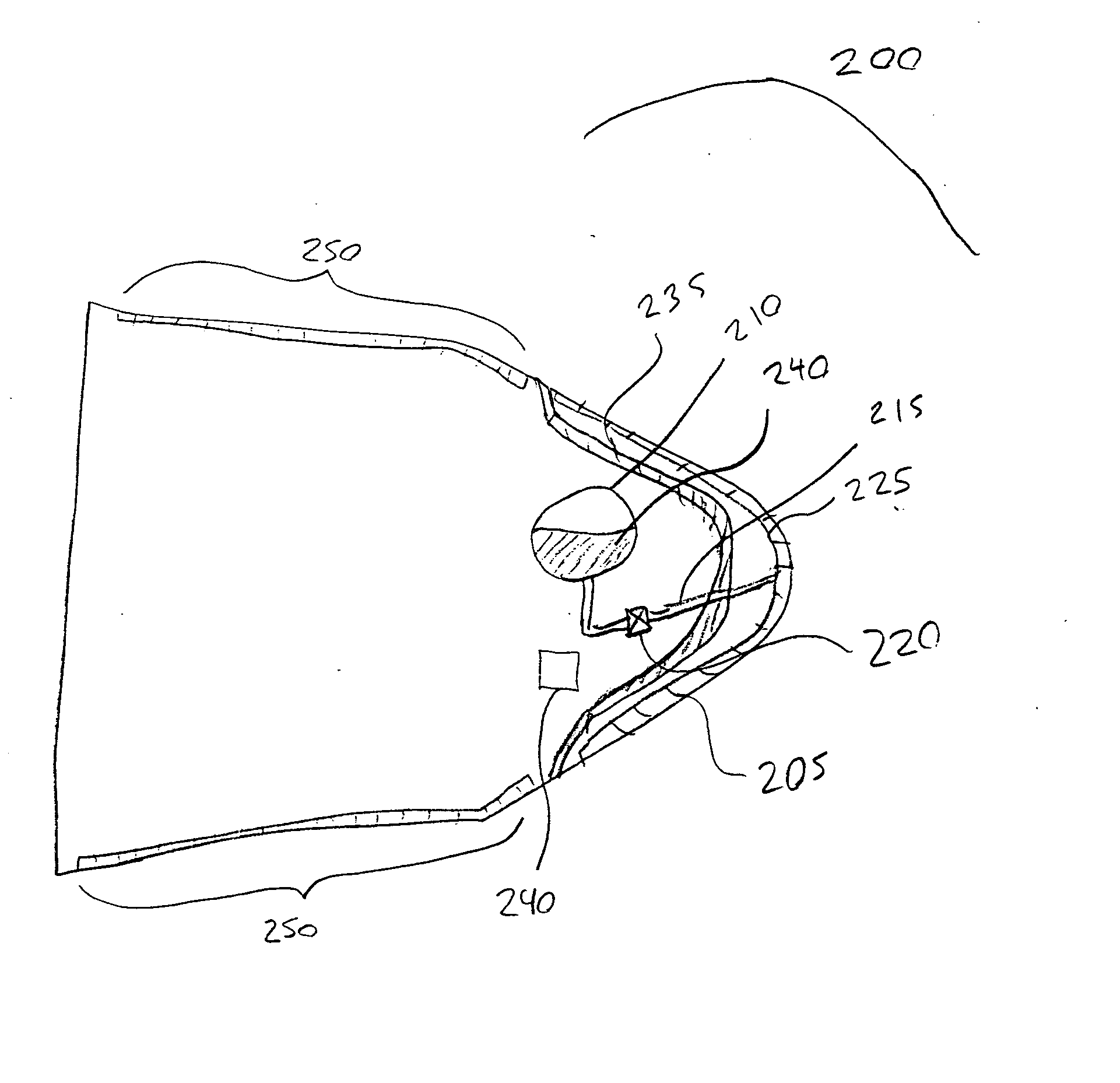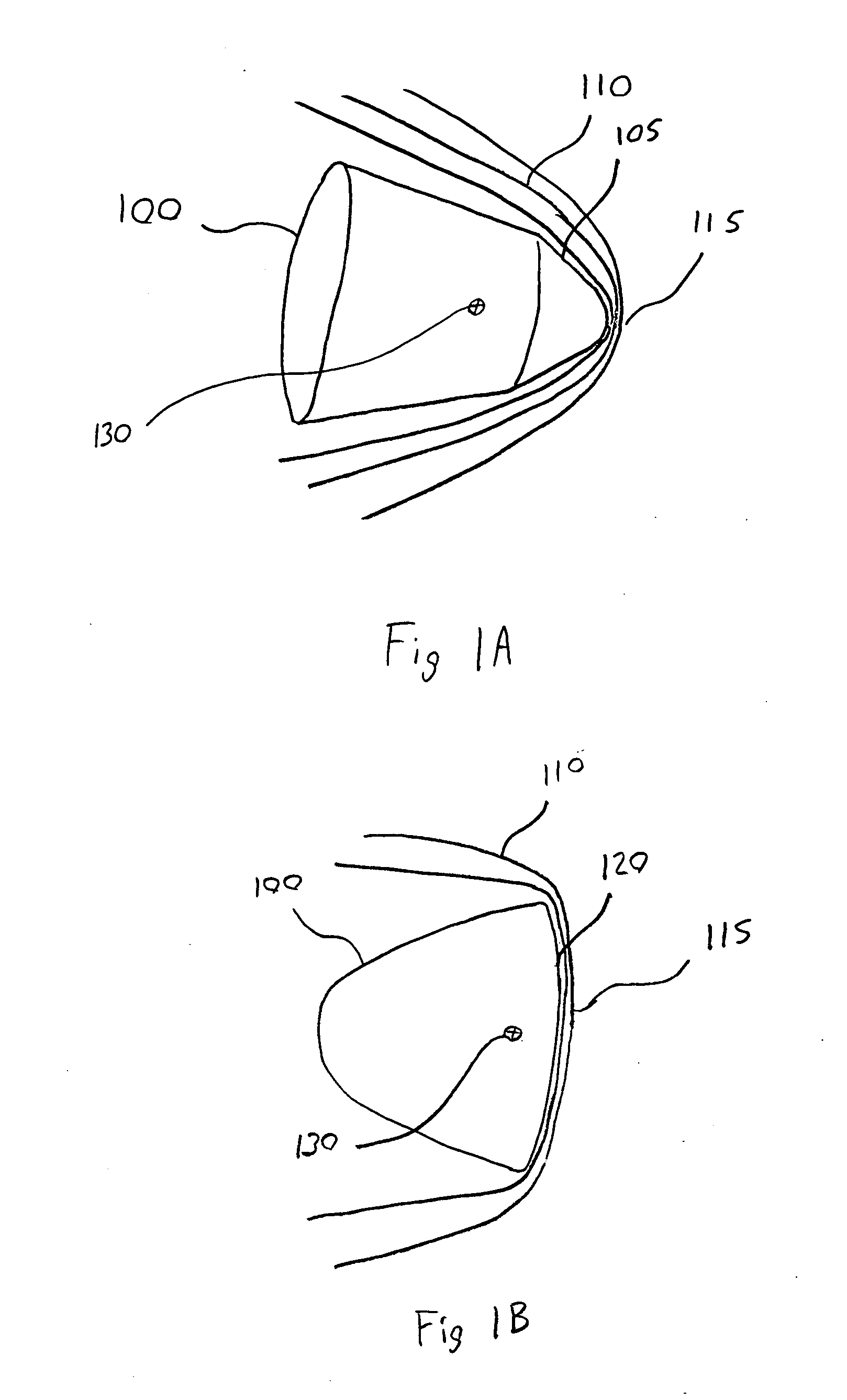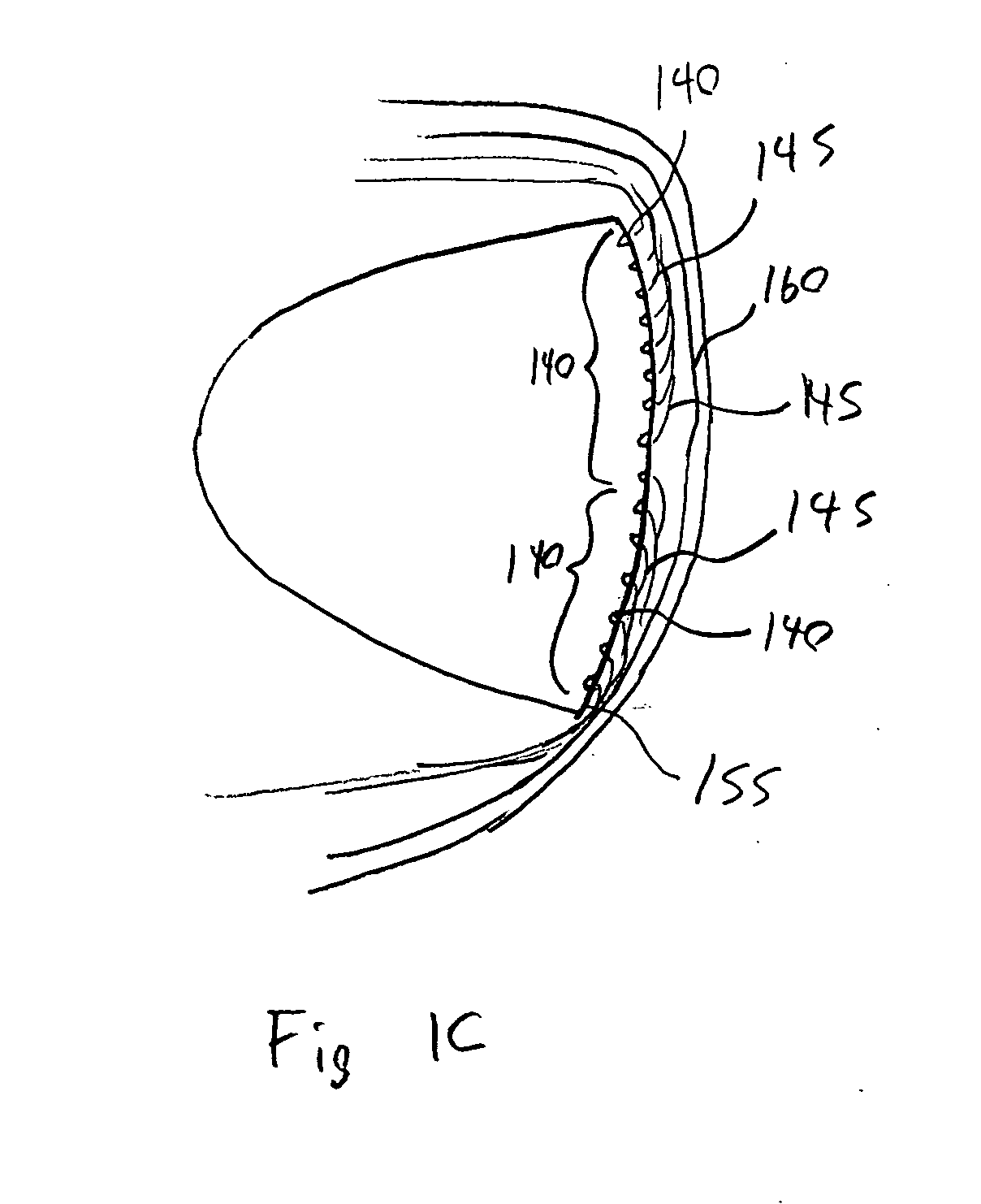Atmospheric entry thermal protection system
a thermal protection system and atmosphere technology, applied in the field of space vehicles, can solve the problems of difficult to return spacecraft to the surface of the earth, spacecraft would burn up like a meteor in the atmosphere, and most spacecraft are not designed to be recovered, and achieve the effect of economics and reliabl
- Summary
- Abstract
- Description
- Claims
- Application Information
AI Technical Summary
Benefits of technology
Problems solved by technology
Method used
Image
Examples
Embodiment Construction
[0022]FIG. 1A is a pictorial drawing of a spacecraft with a prior-art conical heat shield entering the atmosphere. As depicted, the spacecraft (100) with a conical heat shield (105) is entering the atmosphere. The shockwave (110) flows over the heat shield. The center of mass (130) of the spacecraft if far enough forward that it is stable on atmospheric entry. The maximum heating on the heat shield is at the stagnation point (115) which is in the center of the nose. The heat shield must protect the spacecraft from the heat of the shock wave generated during high velocity movement through a planetary atmosphere. A conical body may be used to generate lift if the center of gravity is offset from the centerline of the vehicle.
[0023]FIG. 1B is a pictorial drawing of a spacecraft (100) with a prior-art blunt heat shield (125) entering a planetary atmosphere. As depicted, a spacecraft with a blunt heat shield (120) is entering a planetary atmosphere blunt-side first and the heat shield m...
PUM
 Login to View More
Login to View More Abstract
Description
Claims
Application Information
 Login to View More
Login to View More - R&D
- Intellectual Property
- Life Sciences
- Materials
- Tech Scout
- Unparalleled Data Quality
- Higher Quality Content
- 60% Fewer Hallucinations
Browse by: Latest US Patents, China's latest patents, Technical Efficacy Thesaurus, Application Domain, Technology Topic, Popular Technical Reports.
© 2025 PatSnap. All rights reserved.Legal|Privacy policy|Modern Slavery Act Transparency Statement|Sitemap|About US| Contact US: help@patsnap.com



